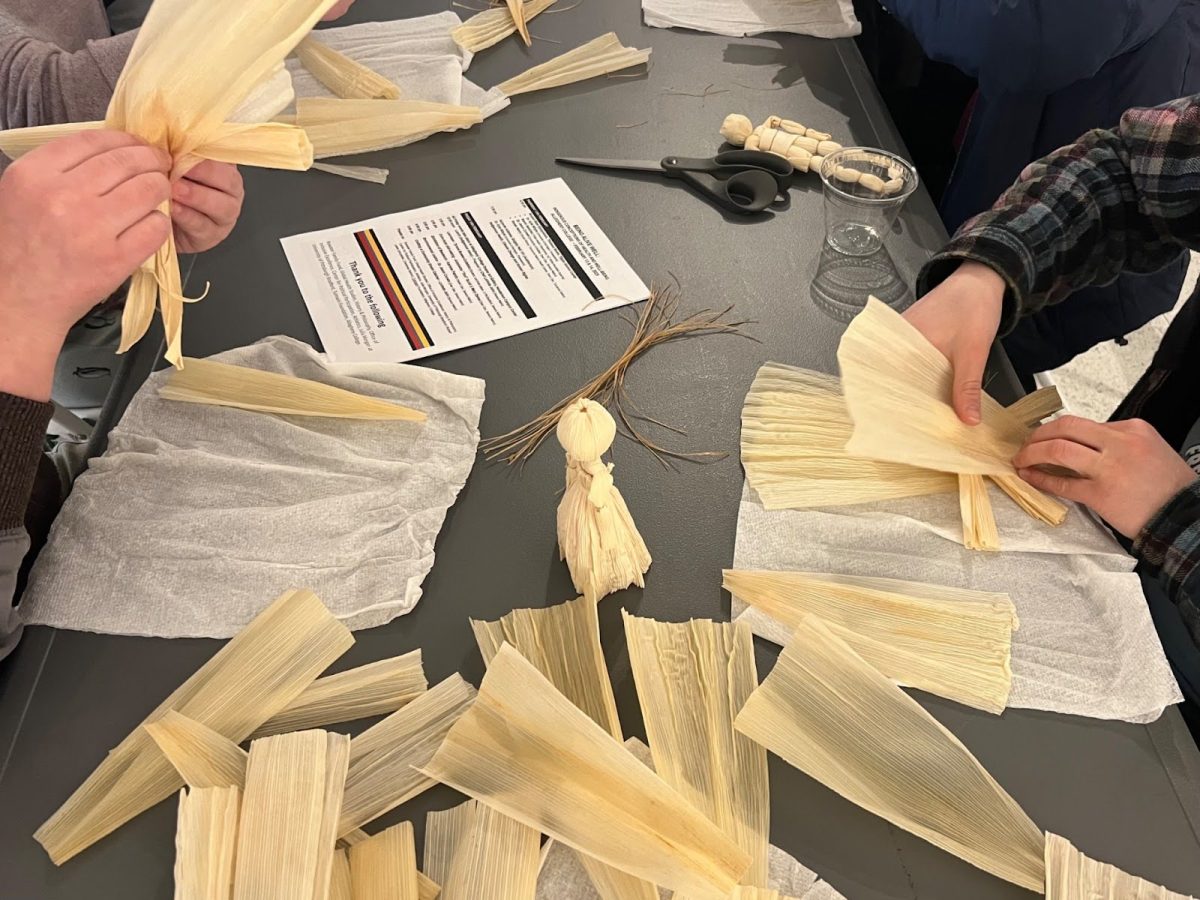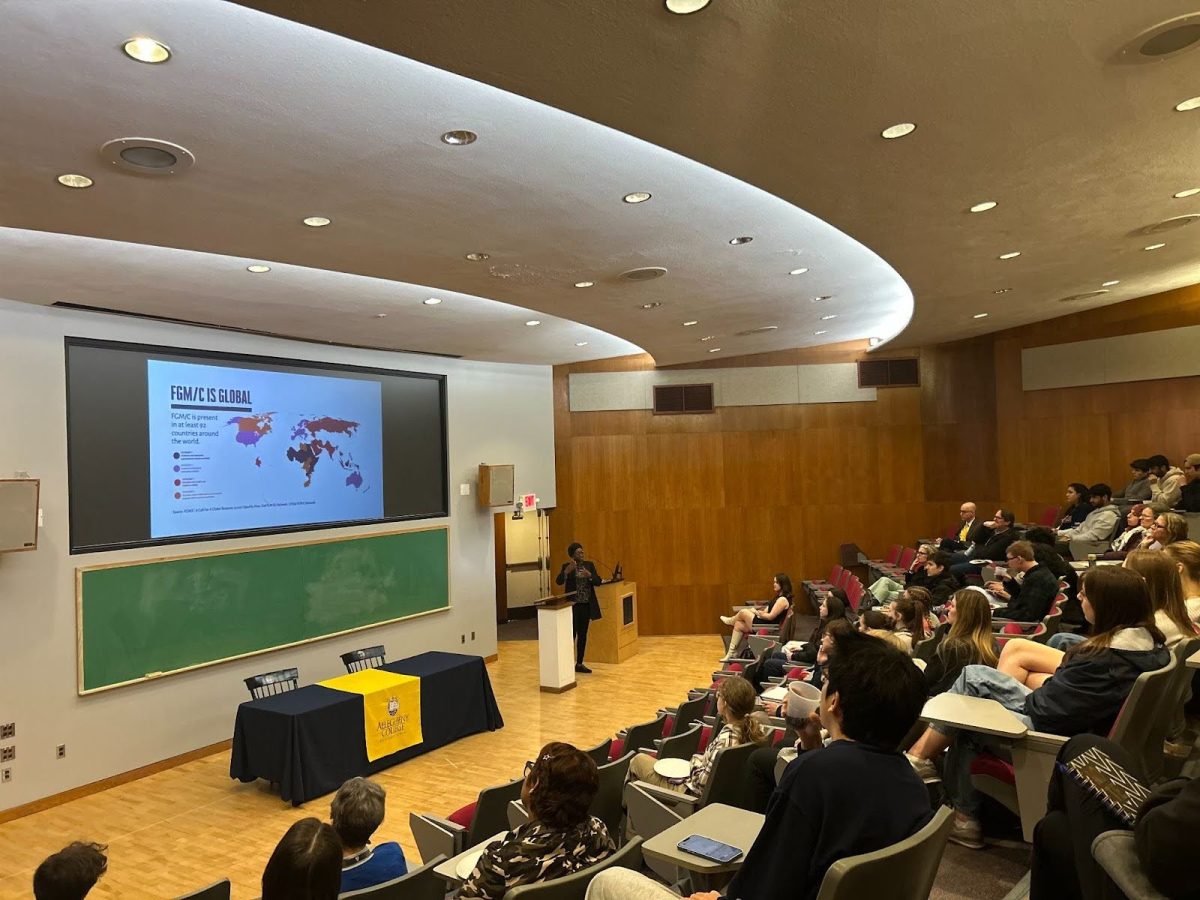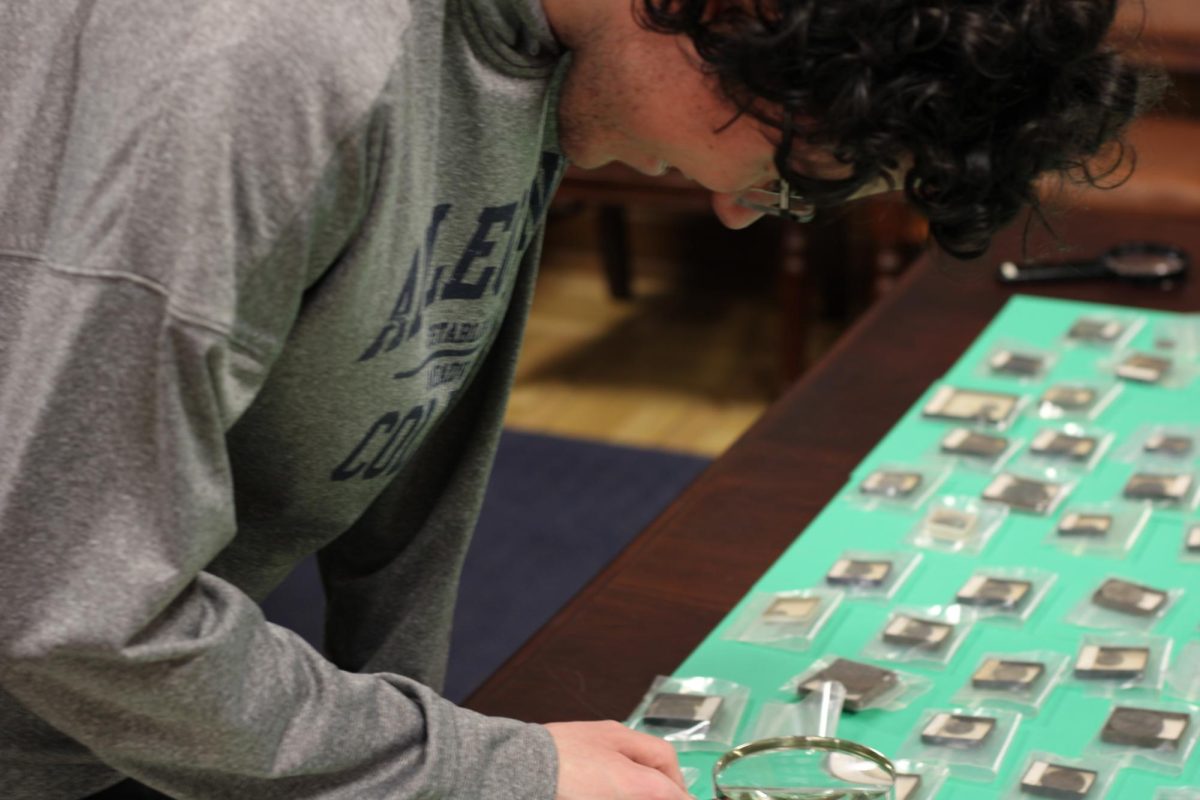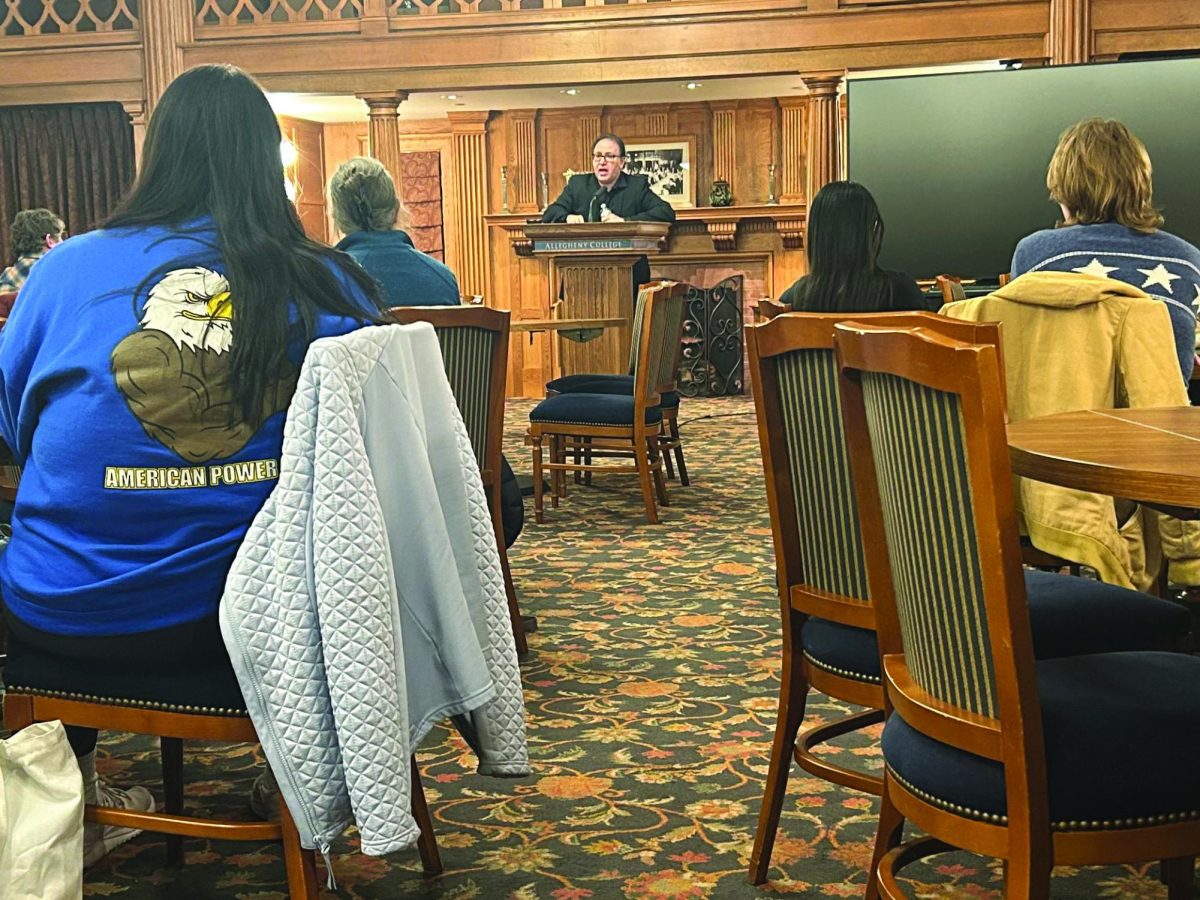During the program “Being Alive Well” members of indigenous tribes presented their holistic conception of well-being among others at the Doane Art Gallery in the Henderson Campus Center last week.
“We basically just invited indigenous people of various kinds and left it to them to decide what to do,” said organizer and Visiting Associate Professor Steven Farrelly-Jackson about the program.
The event on Feb. 14 was divided into several talks from members of the local Seneca Nation, and also included workshops as well as an indigenous lunch. The thought behind the diverse program was, according to Farrelly-Jackson, to represent the interrelation between community, nature and food by having multiple dimensions at the event.
Addressing Allegheny students in the first place, the program was intended to “introduce students to the richness of indigenous culture” and to fight against the “lack of knowledge” and ignorance of indigenous living and the challenges it poses.
Besides the invited speakers who stayed throughout the whole event and supported their colleagues, mostly students attended the event. On Friday around 50 people gathered for lunch, but after the first talk the majority left. With the remaining 15 people, there was a pleasant family atmosphere.
Lorinda John, a member of the Seneca Nation, opened the event with a speech addressing thanksgiving for the served food and presenting the menu with a proud smile.
She prepared steamed broccoli, chicken spiced with ginger, vanilla and cacao and a wild-rice pilaf. As a vegetarian option she served a Bolognese containing beans, tomato sauce and different kinds of pasta. Initially thinking about presenting the three main indigenous ingredients corn, wheat and squash, she had to improvise a bit in the end.
“Unfortunately I burned it (the spaghetti squash) this morning and you guys get pasta instead,” John said.
The origin of “Being Alive Well” was a short course called “Native American, Health and Social Justice” founded in 2017 by Farrelly-Jackson and Caryl Waggett, associate professor and chair of the Global Health studies program. Originally this year’s event was built around Kyle Powys Whyte, who serves as George Willis Pack professor; university diversity & social transformation professor; professor of philosophy; Tishman Center faculty director at the University of Michigan, quickly expanded by various speakers from mostly the local Seneca Nation, but also from the Hawaiian tribe Kāne’ohe represented by Kaleialoha Froning, ’24.
Even though the module could not take place this year due to a lack of enrollment, Farrelly-Jackson is pleased that at least the event could take place and is looking forward to meeting the participants in person.
Besides Farrelly-Jackson and Waggett, Professor and Philosophy Program Chair Eric Palmer helped with organizing the event. Together they reached out to mostly existing contacts collected through the organization of the module over the last years. Unfortunately, they had to deal with some last-minute changes since Powys Whyte and a member of the Cherokee nation had to cancel their talks due to difficult weather conditions and urgent family matters.
Following the lunch, Tyrone Bowen-Collateta, a student at the University of Pittsburgh at Bradford, talked about lacrosse and its meaning for him as a member of the Seneca Nation and a passionate player.
He was supported by a large part of the men’s lacrosse team and some of the women’s team, too, which came for his speech and helped John to set up the food.
The next activities were more craft oriented. Antoinette Scott and her daughter Mary Denea prepared a workshop for corn-husk doll-making. During the workshop she and her daughter went around and helped every person individually. Some people also used the intimate atmosphere to get to know them and their culture in a more personal way.
“We used to make corn-husk dolls when I was growing up,” said Erin McGee, ’28, who was most excited about the food and the doll-making workshop. Together with Rachel Statsick, ’28 they visited the event out of curiosity and thought that it was a “great opportunity” to learn something new about the local indigenous population which they didn’t know much about.
After the workshop an exhibition of beadwork was presented by Karlene Familo, a member of the Seneca Nation and the Hawk clan. The dress and purse she introduced to the remaining 15 people were worn by a model for the winter 2024 issue of the “First American Art Magazine.”
It took her one month to finish these two art pieces. The dress is constructed of beans and corn and is like a real person to Familo. This was followed by a talk about environmental justice by Jason Corwin and another workshop for crafting a community dream catcher led by John.
Hoping that the event could inspire students and open their eyes for alternative ways of living, Farrelly-Jackson is already planning new events to hold.
Categories:
‘Being Alive Well’: an indigenous approach to well being

Gallery • 4 Photos
Story continues below advertisement
0
More to Discover







